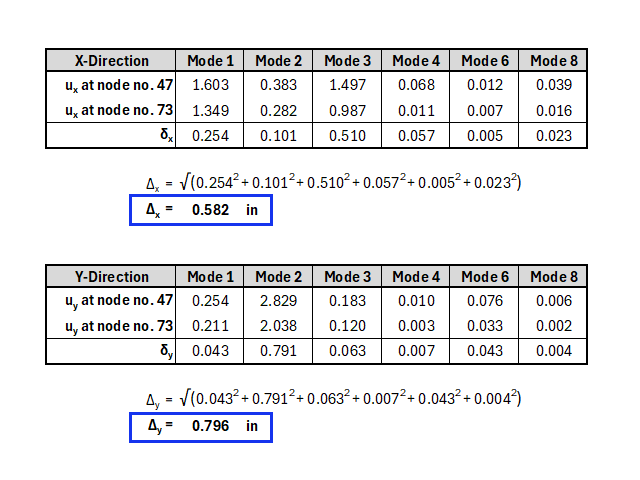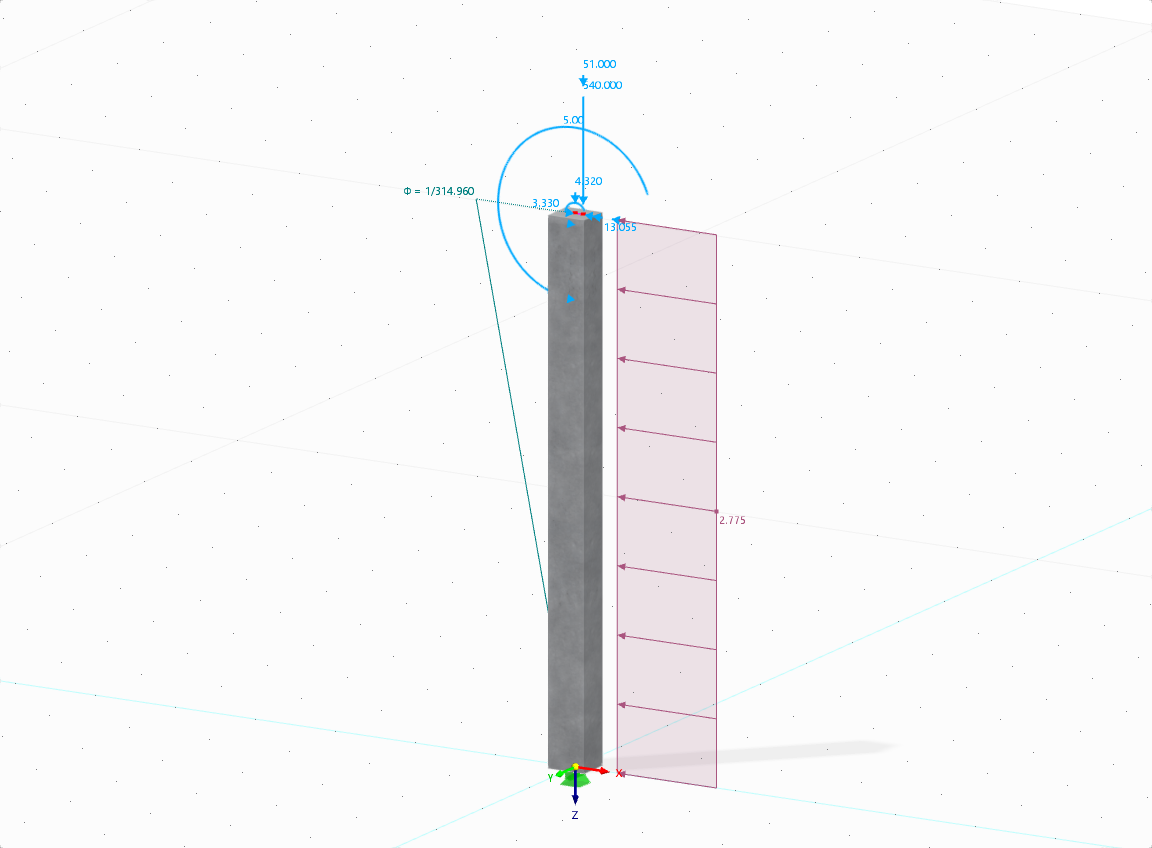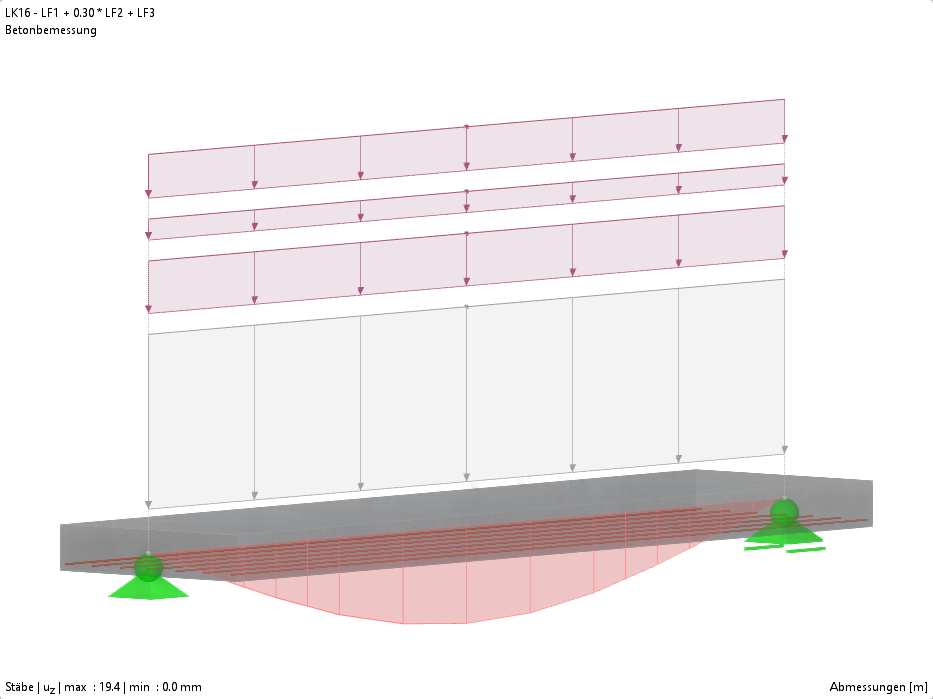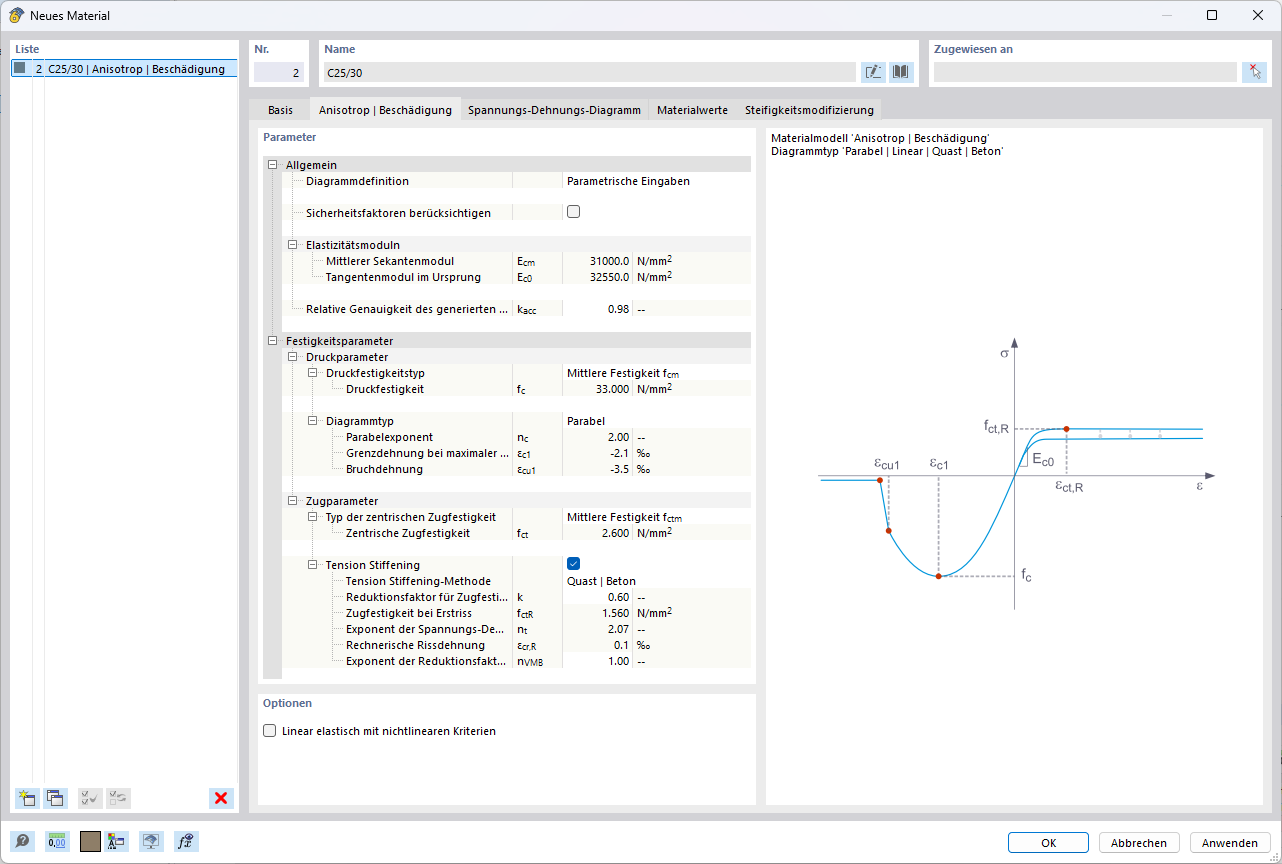Drift Determination According to ASCE 7-22
According to ASCE 7, the Design Story Drift Δ, is computed as the difference of the Design Earthquake Displacements δDE, per section 12.8.6.3. Diaphragm deformation δdi may be neglected in determining the design story drift per section 12.8.6.5.
|
δx |
Gesamtverschiebung eines Stockwerks [in (mm)] |
|
Cd |
Vergrößerungsfaktor der Auslenkung nach Tabelle 12.2-1 |
|
δxe |
Auslenkung an der geforderten Stelle, durch eine elastische Analyse ermittelt [in (mm)] |
|
Ie |
Bedeutungsbeiwert, definiert in Abschnitt 11.5.1 |
Load Combination for Drift Analysis
Gemäß Abschnitt 12.8.6.1 muss die elastische Analyse zur Berechnung der Verschiebung auf 1.0Eh kombiniert mit den erwarteten Gewichtslasten basieren. Gravity load is included to maintain consistency between the forces used in the drift analysis and those used for stability verification (P – Δ) [ASCE 7 Commentary C12.8.6]. The load combination 1.0Eh + 1.0D + 0.5L is applicable for live load that is less than or equal to 100 psf (exception 1, section 2.3.1).
Location of Drift Evaluation (ASCE 7 Section 12.8.6.5)
- When the centers of mass (CoM) are aligned, the story drift is computed based on the center of mass displacements.
- When the CoM are not aligned (eccentricity between the CoM of two adjacent floors is more than 5% of the width of the diaphragm), the drift computed at the lower story is based on the vertical projection of the CoM of the upper story (Commentary C12.8.6).
- For structures assigned to Seismic Design Category C, D, E, or F that are torsionally irregular, the drift is computed along the edges of the structure with two vertically aligned points.
Modal Analysis & Response Spectrum Analysis Add-ons
To gain insight into this topic, a three-story concrete building with an L-shaped ground plan is used as an example (Image 01). First, the modal analysis is performed to obtain the natural frequencies and mode shapes of the structure.
Afterwards, the response spectrum analysis (RSA) is used to generate the response spectrum according to the ASCE 7-22 standard. It is possible to include the displacement-related parameters, Cd and Ie when creating the response spectrum and to consider them in the story drift calculation. In this example, Cd = 1.5 and Ie = 1.0 are used (Image 02).
With the Building Model add-on, the mass center locations are provided for each story after solving for the spectral analysis. From the "Center of Mass and Rigidity" table, it can be seen that the CoM are not aligned between the adjacent floors (Image 03).
To evaluate the story drift, it is necessary first to create the CoM for each story as a node. Node 47 is added at the top floor at Z = 40.0 ft. Since the drift computed at the lower story is based on the vertical projection of the CoM of the upper story, a copy of the node is added at Z = 30.0 ft, creating node 73. This procedure can then be continued for the lower floors.
The Response Spectrum Analysis add-on offers two options (SRSS or CQC) for combining the results from various mode shapes quadratically in each direction (X and Y).
However, when calculating story drift, a critical consideration arises. As described in ASCE 7 Commentary C12.9.1.5, “MRSA (Modal Response Spectrum Analysis) results in a single, positive response, inhibiting direct assessment of torsional response. One method to circumvent this problem is to determine the maximum and average displacements for each mode participating in the direction being considered and then apply modal combination rules (primarily the CQC method) to obtain the total displacements…”.
Therefore, the difference of the displacements must not be determined from the results already superimposed quadratically, but may be superimposed only after the difference is determined. Consequently, the following formula is valid:
Due to this condition, envelope displacements from "X" or "Y" cannot be directly utilized for evaluation. Instead, story drift must be assessed individually for each mode shape in each direction, and then manually superimposed.
By displaying the displacement ux at the centers of mass of each floor, the story drift can be derived from the differences between superimposed points (Image 04).
Mode shapes with minimal mass participation (e.g., mode 5 and 7 in this instance) can be excluded from calculations through the "Selection of Modes" tab under the RSA load case.
The relevant mode shapes and their displacements are listed in the tables below (Image 05).
This procedure has to be carried out for each story. This way, the maximum story drift for the entire building can be determined. For simplicity, the inclusion of gravity loads is not shown.
Drift Calculation According to the Building Model Add-on
The Building Model add-on can be useful to establish the drift of the structure. However, the methodology for calculating drift does not follow the ASCE 7 approach as described above.
In the Building Model, the location of the floor displacement reported in the "Interstory Drifts" table (Image 06) is not necessarily based on one specific point (i.e., center of mass), but rather the average value of the floor displacements. A floor does not necessarily need to exist at these points.
A special member type called "Result Beam" is created internally to integrate the displacement results from the entire floor. The result beam for each floor includes the entire floor and all the beams and columns below the floor (Image 07).
As shown above (Image 06), the result beam displacements displayed graphically agree with the values reported in the "Interstory Drift" table.
Based on the drift analysis presented above, the final drift calculations from both ASCE 7 and the Building Model add-on are nearly identical for the top story in the X-direction (0.582 in vs. 0.581 in). In the Y-direction, the results are 0.796 in vs. 0.790 in (not shown).
It should be noted that while these results align closely in this specific case, variations may occur for different types of structures due to differing analytical approaches. Nevertheless, the Building Model add-on proves valuable as a time-saving tool for determining drift.
Lastly, the drift can be checked against the allowable seismic drift limits provided in Table 12.12-1 of ASCE 7-22.




















..png?mw=320&hash=bd2e7071b02d74aef6228d22c4b83867d2d7e1a5)








































_1.jpg?mw=350&hash=ab2086621f4e50c8c8fb8f3c211a22bc246e0552)


-querkraft-hertha-hurnaus.jpg?mw=350&hash=3306957537863c7a7dc17160e2ced5806b35a7fb)






















.png?mw=600&hash=49b6a289915d28aa461360f7308b092631b1446e)
